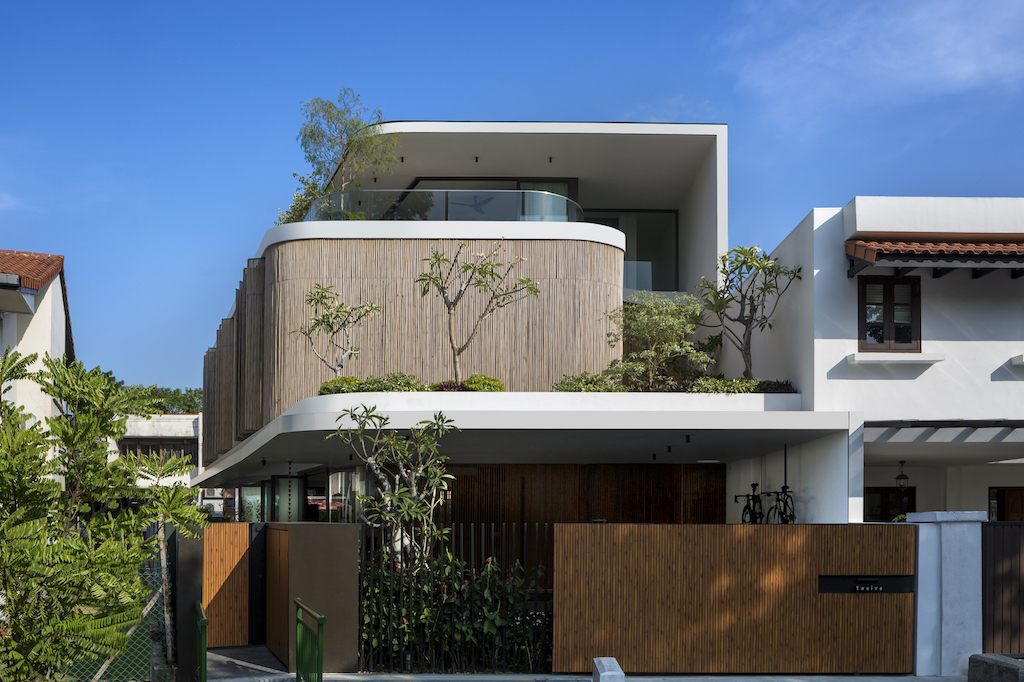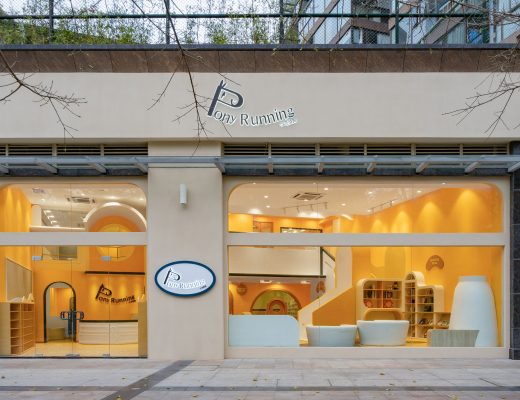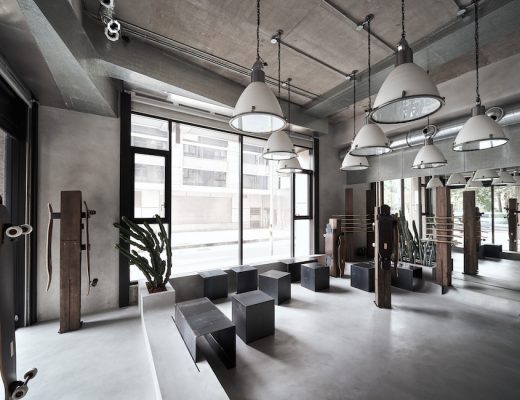Wallflower Architecture + Design has designed a 680m² semi-detached house in Singapore’s western area called The Bamboo Veil House. To begin with, site itself presents a challenge – it sits on a street bend, resulting in a triangular plot with a narrow frontage.

The original house was purchased by the owner many years ago and only minimal renovation had been done since then. When the ageing structure needed upgrading, the owner called upon the practice to re-build the house giving the architects a simple brief – design a minimalist tropical house with a wide social space on the ground floor for family and friends to gather. His family wished for a private yet modern tropical home that responds to Singapore’s dense urban environment and tropical climate. The owners had also amassed a large collection of art through the years from various continents and saw this as an opportunity to display them in the new house.
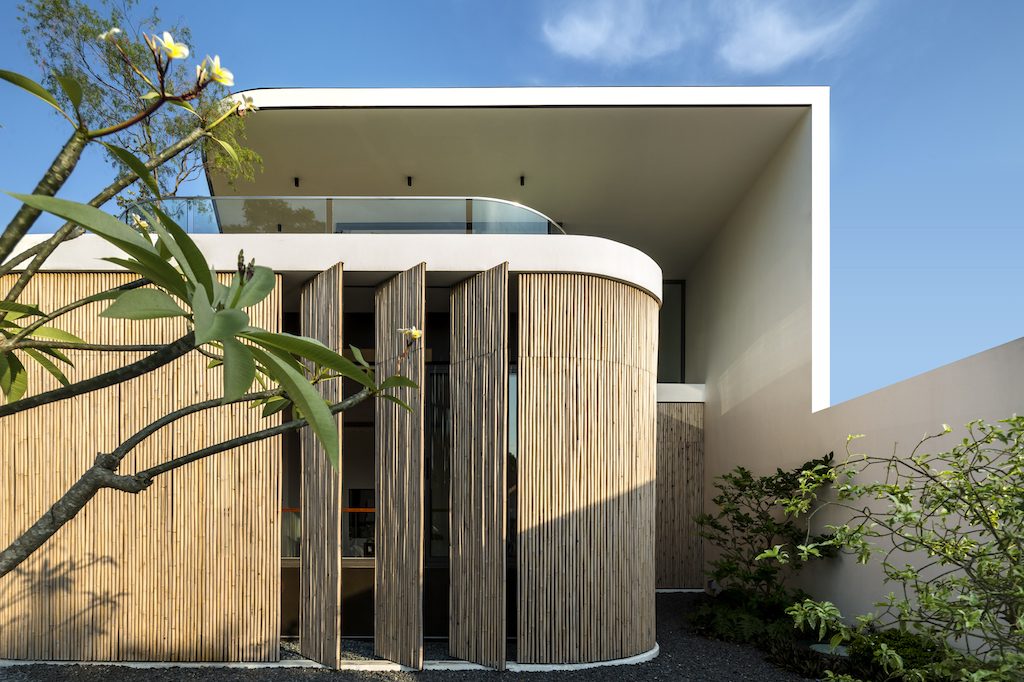
The small family unit and requirements for bedrooms were small, it was relatively easy to meet the spatial requirements and arranging them into the odd-shaped triangular plot. The ground floor was kept for dining and entertaining, bedrooms on the second floor and a study and family room on the attic level. During a family vacation to Tokyo, the owner visited Nezu Museum by Kengo Kuma, and was fascinated by the bamboo-clad facade.
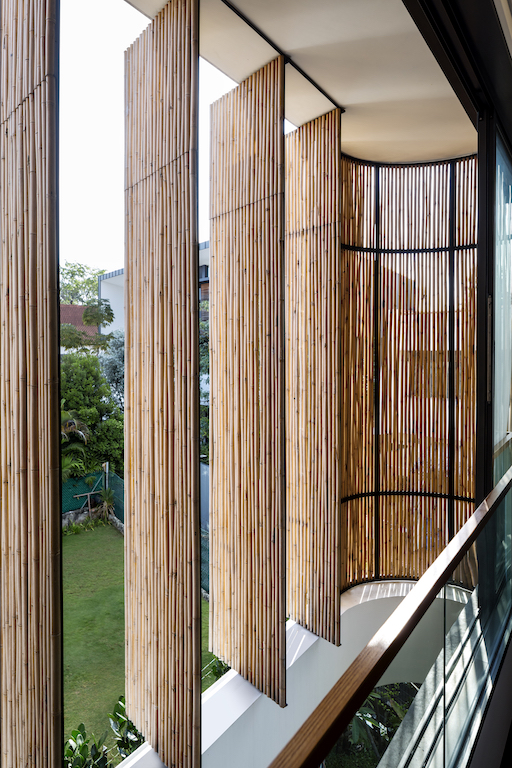
This reflects in the bamboo screen in the house that responds to the site with both form and function. It was conceptualised as a veil, wrapping around the building in a single continuous fabric. A unifying element, the bamboo screen flows around the rounded edges of the façade, creating a soft and organic layer sandwiched between the defined white eaves. The rounded edges of the façade respond to the street bend while preserving the privacy of the occupants.
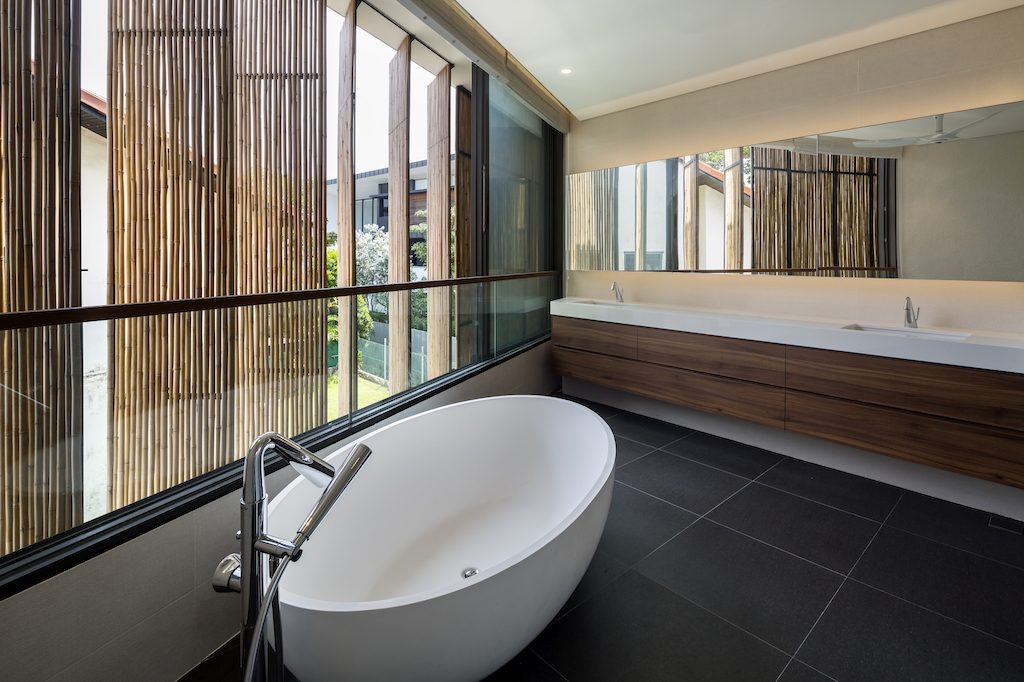
The natural colour of the bamboo against the white backdrop further accentuates the dominance of the veil. When night falls, the house becomes a beacon along this street. Prominently situated at the turn, it glows like a delicate bamboo lantern. Light spills out from inside between the bamboo fingers, creating an interesting play of light and silhouette. Closely spaced, the screen offers privacy in both day and night. The screens can be closed in the daytime to filter sunlight or opened for an unobstructed view. At night, the screens are closed for a sense of privacy and intimacy.
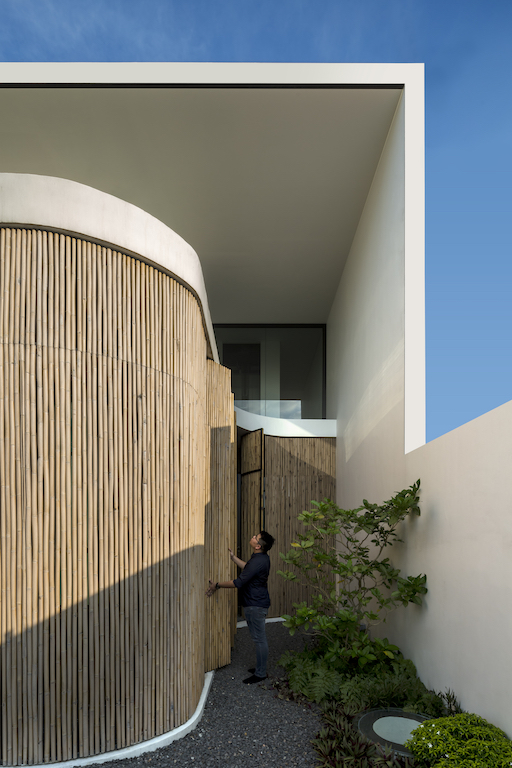
For an effective tropical response, the façade was designed as a double skin. The outer skin comprises of the operable vertically-laid bamboo screen and serves both privacy and solar protection functions. The inner skin is made up of aluminium-framed glass windows, allowing for natural ventilation in an all-weather condition or closed for air-conditioning on hot and humid days. The design offers flexibility for natural ventilation without compromising privacy, fulfilling the owner’s expectation of a tropical modern home.

The bamboo veil thus acts as both a breathing façade and a privacy screen. The bamboo used has been locally-sourced making it sustainable and eco-friendly, known for its lightweight and high strength. It is easy to install, replace or repair. The design brief aligns with the owner’s concern for the environment as the bamboo screen is an opportunity to cool the house passively and reduce reliance on energy-intensive air-conditioning.
Operable bamboo screens and windows located throughout the second Storey encourages natural ventilation while framing views to the external softscape. The tropical design response is mirrored on the first storey and attic by a large overhang providing deep shade from the sun, and keeping the house cool at all times. Inside, the interior furnishings are pared down to keep visual clarity and preserve the tranquility within each space and its function.
Photos: Marc Tey Photography

